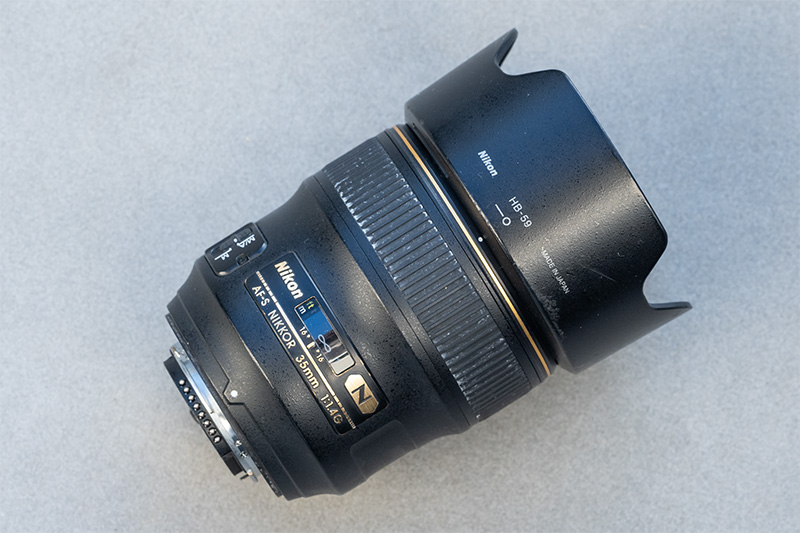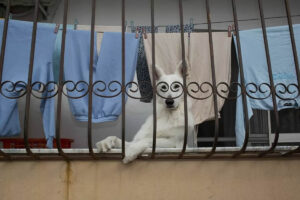 |
| Image: iStock/Popartic Illustration: Jeff Keller |
I've been reviewing cameras since 1997 and in that time I've learned a lot about what to do – and not to do – in that demanding business. In celebration of DPReview's 25th anniversary, here are five things I've learned about reviewing cameras, usually the hard way, both at DPR and on my website, DCResource.
Don't break embargoes
 |
| Image: iStock/Fiona1 |
Websites like DPReview often get access to products well before they're launched. The trust attached to that privilege comes with great responsibility. If we take the product out in public, the brand and model name is often covered by gaffer's tape, just in case there are any spies nearby.
Underlying this trust is the embargo: the time when the product will be revealed to the public. Until that time occurs (which is usually late at night for those of us on the West Coast), nothing can be published. It was my job to ensure we didn't break the embargo.
For a long time, DPReview's content management system used UTC (Coordinated Universal Time), which is 7 or 8 hours ahead of Pacific Time, depending on the time of year. It was easy to forget to change the time zone in the CMS, and bad things could happen if you entered the wrong time. In one instance, I was the guilty party. When the team got up in the morning, websites everywhere had articles about how DPR had broken an embargo on a new product. The manufacturer was not happy – nor was management – and many meetings followed.
We quickly implemented checks to prevent this from happening again. The default time zone was switched to Pacific, and a confirmation dialog now pops up when you save an article with a day/time in the future.
Save every photo
 |
|
Nikon Z6 III with its SD and CFExpress slots. Photo: Richard Butler |
While testing a camera, DPReview reviewers take thousands of photos. The autofocus 'bike test' everyone knows and loves can account for hundreds of shots since we're shooting multiple runs at high burst speeds. If we just copied over the photos where the camera performed well, then there would be no way to evaluate how often it didn't do well.
The same thing goes for sample photos. We always take pictures in a variety of situations but can only post a modest selection. Having the rest of the images on hand allows DPR staff to notice trends you might not notice by looking at the random set of photos in a gallery. Maybe the bokeh seems a little 'off', or some photos you'd expect to be sharp are back-focused. It may take longer to copy and save gig after gig of photos, but it's invaluable to the review process.
Stuff happens
 |
|
No cameras were harmed in the creation of this photo Photo: Jeff Keller |
People can get a little cocky when carrying around expensive electronics. Most of the time, there are no problems. But how many times have you had your smartphone's screen replaced? Sometimes, things go wrong.
We use tripods extensively for testing cameras at DPReview, and everything goes smoothly 99% of the time. But my number came up when shooting a gallery with a camera that won't be named here. The camera had an expensive long telephoto lens attached and was on a pretty sturdy tripod. It was breezy – typical for Seattle.
While taking a lens out of my bag, I watched in horror as a gust of wind blew the tripod over, landing lens-first onto the concrete. Amazingly, no glass was cracked, but the filter threads were bent, and the chassis was beaten up (the camera survived, thankfully).
As soon as I returned to my desk, I sent a lengthy apology to our PR contact, explaining what happened and promising to pay the cost of the repair. Thankfully, the agency said that 'stuff happens' and not to worry about it. Phew.
Consistency is key
 |
|
You've probably seen this before Photo: DPReview |
People want to see how cameras compare on a level playing field. DPReview has relied on the studio comparison scene for decades, which has had two iterations and been moved at least four times. DPReview staffers check lighting and white balance and follow a prescribed set of instructions to ensure that all cameras' settings are consistent. If, upon reviewing the photos, something's off, the test scene will be shot again. Very finicky cameras may require three trips to the studio.
DCResource also had a studio scene, though it wasn't as elaborate as DPReview's, as well as a photo of a well-known mouse.
 |
|
Some of the standard DCResource sample photos Photos: Jeff Keller |
Something I still take a lot of pride in is the consistency of the sample photos I captured for cameras on DCResource. There were always three groups of photos: Chinatown in San Francisco, Stanford University, which asked me to leave and not come back, and Treasure Island, which faced downtown SF.
Since the weather in San Francisco is very unpredictable, I'd watch the conditions carefully and bring as many compact cameras as I could stuff in my bag. I think my record was ten. I'd work my way through the cameras at every stop and then move on to the next spot. While not a scientific test, I received many e-mails of appreciation for the effort.
Get to know your camera
 |
|
Six of the buttons seen on this Panasonic G9 II can be customized, as can the functions of both control dials. Photo: Brendan Nystedt |
Modern cameras are loaded with customizable buttons, dials, and menus. My personal Panasonic G9 II has:
- 17 customizable buttons (five via the touchscreen) for both record and playback mode
- A customizable quick menu that is unique to still and video shooting modes
- Three custom spots on the mode dial
- A three-page 'My Menu' which can be the default when you press the Menu button on the camera
And those are just for quickly accessing functions. You can customize the burst speeds, the type of shutter used (mechanical/electronic), a preferred color profile, or how quickly the focus point moves. For video, one can tweak the speed and sensitivity of the AF system to meet my needs.
Learning every little detail of a camera, right down to the menu items, has sometimes meant that our reviews take a bit longer to publish than what you'll find on some other websites (mine included) or, these days, YouTube. Heck, if you go back several years, our reviews used to list every single menu option, and boy, were those fun to type up. But diving into the details like this allowed us to catch things and reveal subtle differences between cameras, which would otherwise have been missed.
Live and learn
These are just five things I've learned over the last two and a half decades of reviewing cameras. Not all of them were fun, but that was part of the adventure.
What have you learned over the past 25 years of digital photography, and how? Let me know in the comments.

 4 weeks ago
11
4 weeks ago
11







 English (US) ·
English (US) ·